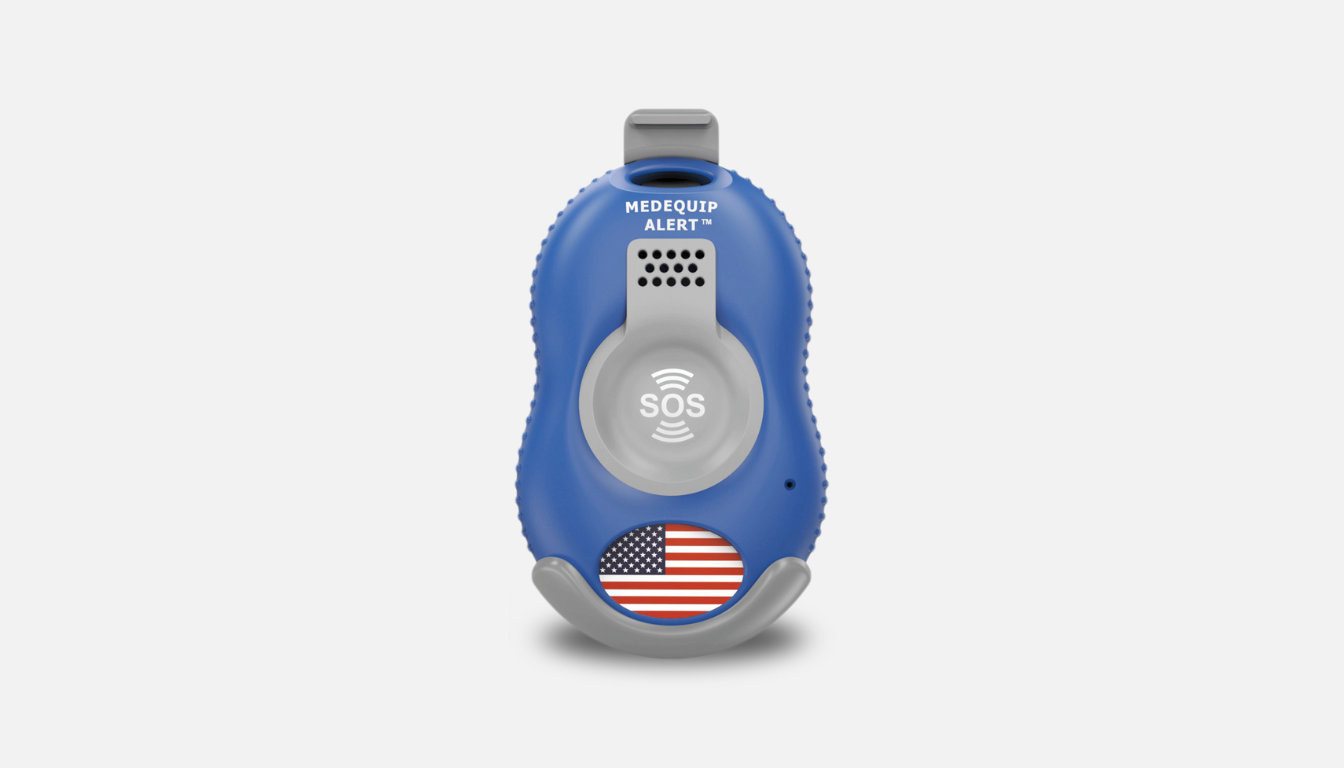Commercial adaptive devices can swallow a fixed income—yet many day-to-day challenges can be solved with ordinary household items. Below are 20 clear, step-by-step projects grouped by need (Grip & Dexterity, Reach & Mobility, Daily-Living Helpers, and Home Safety). For each hack you’ll find:
- Problem it solves
- Materials you probably own
- Build instructions
- How to use it safely
Most take 5–10 minutes to assemble and cost under $5. When a task involves body weight—transfers, stair support—buy a certified product instead of DIY.
Section A — Grip & Dexterity Aids
1. Tennis-Ball Jar Opener
- Problem: Weak wrist twist when opening stuck jar lids.
- Materials: 1 tennis ball · sharp utility knife.
- Build: Slice the ball cleanly in half around the seam. Done.
- Use: Place the cut side of one half directly over a jar lid; grip the felt exterior and twist. The rubber interior grips metal, the felt protects hands.
2. Rubber-Band Pen Grip
- Problem: Fine-motor pain when holding a thin pen or pencil.
- Materials: 2 wide produce rubber bands · writing instrument.
- Build: Wrap bands snugly around the pen barrel until the diameter is about 1 in (2.5 cm).
- Use: The thicker barrel lets fingers relax; replace bands every few months when they dry and crack.
3. Thick Foam Handle for Utensils & Toothbrushes
- Problem: Painful pinching while eating or brushing teeth.
- Materials: 4-inch piece of pool noodle or pipe insulation · scissors.
- Build: Cut a slit along the foam; press utensil handle fully inside.
- Use safely: Wash with dish soap; replace when foam loosens.
4. Paracord Zipper Pull
- Problem: Tiny zipper tabs on coats and purses.
- Materials: 6 inch piece paracord · lighter or heat-shrink tube.
- Build: Thread cord through tab, tie simple overhand knot; melt or shrink tubing over knot to stop fray.
- Use: Insert thumb or a finger through the loop and pull—no pinching required.
5. Key-Turn Helper
- Problem: Stiff door locks + limited wrist strength.
- Materials: 1 brass house key · LEGO Technic beam (or 3-D-printed bar) · small zip-tie.
- Build: Slide key edgewise into the beam’s side gap; zip-tie through key-ring hole and LEGO hole.
- Use: The long beam acts as a lever so the wrist moves only ¼ turn instead of a tight twist.
Section B — Reach & Mobility Helpers
6. PVC “Grab-N-Go” Reacher
- Problem: Bending over to pick up light items or reaching high shelves.
- Materials: 28 inch ¾-in PVC pipe · ¾-in PVC 90° elbow · strong plastic adhesive hook · PVC glue (or epoxy).
- Build: Glue elbow to one end; glue the hook to tip of elbow. Let cure.
- Use safely: Hook remote, clothes, or keys under 1 lb. Do not lift heavy cookware.
7. Couch-Cane Support Handle
- Problem: Difficulty rising from a soft sofa.
- Materials: Two 12-inch pieces + one 8-inch piece of 1-in PVC · two T-connectors.
- Build: Assemble a T-shape; slide vertical pipe between cushion and armrest until firm.
- Use: Place hand on crossbar and push straight up. Do not pull sideways or it may slip.
8. Bedside Water-Bottle Holder
- Problem: Reaching for water at night leads to falls.
- Materials: Sturdy pocket cut from old canvas tote · 2 zip-ties.
- Build: Zip-tie pocket to metal bed rail at hip height.
- Use: Store water bottle or TV remote; keeps walkway clear.
9. Walking-Cane “Parking Brake”
- Problem: Cane falls to floor when seated.
- Materials: Spare rubber cane tip · small S-hook · zip-tie.
- Build: Zip-tie cane tip horizontally 2 in below handle; hang S-hook from tip.
- Use: Hook over table edge—the cane now hangs instead of sliding.
10. Figure-Eight Ankle Rolls (exercise card)
- Problem: Swollen or stiff ankles after sitting too long.
- Materials: Index card with drawn figure-8 · tape.
- Build: Tape card at eye level on wall as a visual cue.
- Use: While seated, trace the figure-8 in the air with each foot 10 times—simple mobility boost.
Section C — Daily-Living Convenience
11. No-Slip Cutting Board
- Problem: Board slides while chopping vegetables.
- Materials: Four small suction-cup shower hooks · wooden board · screwdriver.
- Build: Screw suction cups upside-down into board corners.
- Use: Press board to clean countertop—suction holds it firmly.
12. Magnetic Button-Helper
- Problem: Shaky fingers struggle to button shirts.
- Materials: Large paperclip · dime-size magnet · heat-shrink tubing.
- Build: Bend clip into ½-inch hook; slide magnet onto straight end; cover with tubing and heat.
- Use: Magnet anchors the button; hook guides it through the hole without pinching fabric.
13. DIY Sock-Aid Board
- Problem: Limited hip flexion makes socks hard to reach.
- Materials: Plastic clipboard (clip removed) · two 30-in shoelaces · duct tape.
- Build: Round edges with scissors; drill two top holes; thread laces; tape rough edges.
- Use: Slide sock onto board, drop to floor, pull laces to draw sock onto foot.
14. One-Handed Nail-Brush
- Problem: Cleaning nails with only one functional hand.
- Materials: Nail brush · waterproof glue · suction cup soap-dish base.
- Build: Glue brush to center of suction cup; let cure.
- Use: Stick inside sink; move fingers across bristles.
15. Remote-Control Velcro Dock
- Problem: Dropping remote on the floor.
- Materials: Two round Velcro dots (hook + loop).
- Build: Stick hook dot on remote side; loop dot on table edge.
- Use: Attach remote to table when finished watching TV.
16. Page-Turner Wand
- Problem: Dry fingers or tremor make turning book pages tricky.
- Materials: Pencil · silicone finger cot · small rubber band.
- Build: Slide cot over pencil eraser; secure with rubber band.
- Use: Lightly press cot against page corner and lift.
17. Light-Switch Paddle
- Problem: Small toggle switches hard to flip with arthritis.
- Materials: 4-in wooden paint-stir stick · Velcro strip.
- Build: Attach stick horizontally across toggle with Velcro.
- Use: Push paddle with fist, elbow, or back of hand.
18. Drawer-Loop Handles
- Problem: Small knobs require finger pinch.
- Materials: 1-in nylon webbing loops · two small screws and washers per drawer.
- Build: Screw webbing ends 2 in apart to drawer face.
- Use: Slide four fingers or a closed fist into loop and pull.
Section D — Outdoor & Hobby Helpers
19. Foam-Grip Garden Tools
- Problem: Thin trowel handles hurt arthritic fingers.
- Materials: Bicycle grip foam sleeve or pipe insulation · two zip-ties.
- Build: Slide foam over handle; cinch both ends with zip-ties.
- Use: Clean sleeve after gardening; replace if tears appear.
20. No-Slip Porch Cane Rest
- Problem: Cane tips slide on wet porch boards.
- Materials: Self-adhesive 80-grit anti-slip tape (3 in strip).
- Build: Wrap tape around bottom cane tip.
- Use: Replace tape every six months; avoid indoor floors to prevent scuffs.
Safety Checklist for All DIY Aids
- Test each device seated first; if it fails, you stay safe.
- Never rely on PVC or homemade wood for weight-bearing transfers.
- Inspect weekly for cracks, loose zip-ties, or worn foam.
- Label DIY aids with permanent marker so helpers know their purpose.
Final Word
Simple household materials can bridge the gap between independence and frustration. Start with one or two hacks that solve your biggest daily irritations, then try others as confidence grows. Your creativity—and a few dollars—can equal the freedom you deserve.

